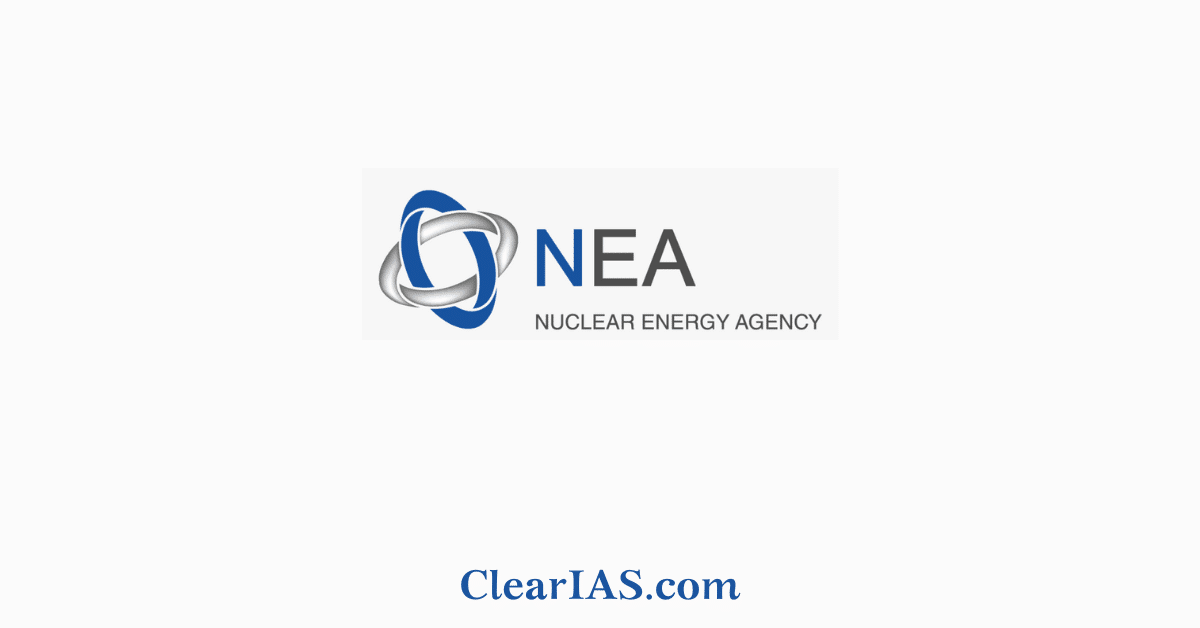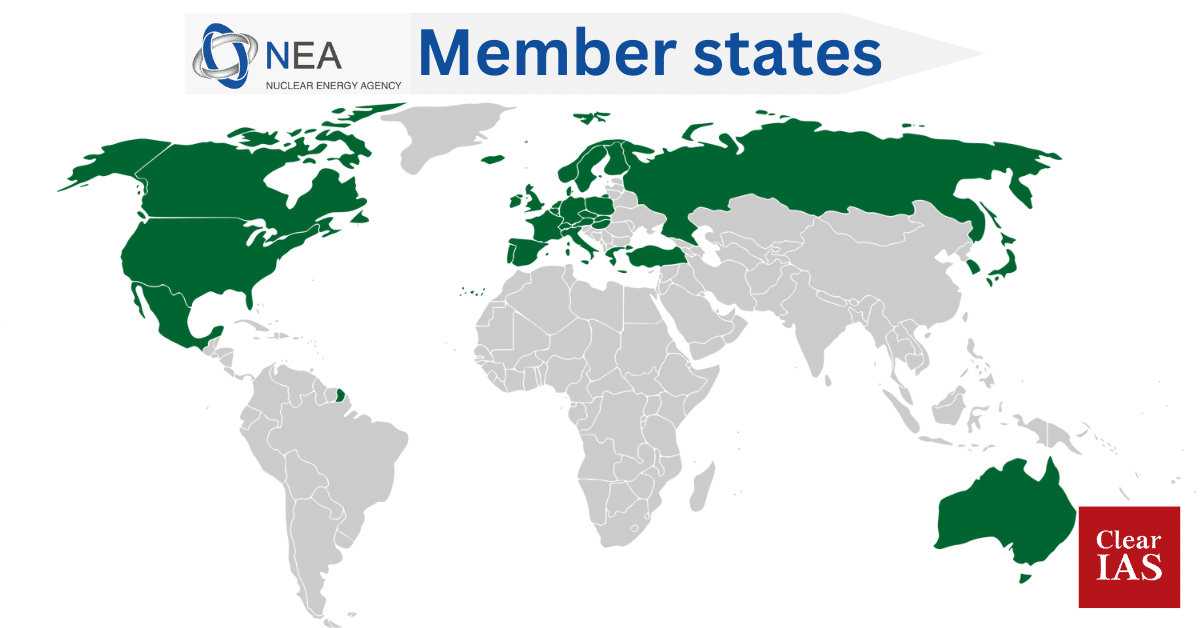
How Nuclear Energy Agency (NEA) works? Which nations make up NEA’s membership? Read more about Nuclear Energy Agency (NEA) by OECD.
The NEA is a non-political agency dedicated to sharing and disseminating state-of-the-art knowledge in the field of nuclear energy.
What is Nuclear Energy Agency (NEA)
The OECD Nuclear Energy Agency (NEA) is an intergovernmental agency that facilitates cooperation among countries with advanced nuclear technology infrastructures to seek excellence in nuclear safety, technology, science, environment and law.
The NEA operates within the Organisation for Economic Co-operation and Development (OECD) framework and is located in Paris, France.
The mission of the NEA is to “assist its member countries in maintaining and further developing, through international co-operation, the scientific, technological and legal bases required for the safe, environmentally friendly and economical use of nuclear energy for peaceful purposes.
How Nuclear Energy Agency (NEA) works?
The NEA operates under the general OECD rules, and the provisions of its strategic Plan, aimed at helping it to meet the evolving needs of its member country governments in the nuclear energy field.
The NEA works as a forum for sharing information and experience and promoting international cooperation; a centre of excellence which helps member countries to pool and maintain their technical expertise and a vehicle for facilitating policy analyses and developing consensus based on its technical work.
It is the only intergovernmental body that brings together experts from the countries with the deepest experience and capabilities in the broad range of civil nuclear energy technology and policy issues from the Americas, Europe and the Asia-Pacific to achieve common understanding, positions and projects to advance the state of the art in the application of nuclear energy technologies.
It provides authoritative assessments and forges common understandings on key issues as input to government decisions on nuclear energy policy and to broader OECD analyses in areas such as energy and the sustainable development of low-carbon economies.
History of Nuclear Energy Agency (NEA)
Concerned with the rapidly increasing energy needs of post-World War II European economic recovery, and particularly the possibilities presented by nuclear power, the Council of the Organisation for European Economic Co-operation (OEEC) [predecessor of the OECD] set up the European Nuclear Energy Agency (ENEA) in February 1958.
Originally formed on 1 February 1958 under the name European Nuclear Energy Agency (ENEA)—the United States participated as an Associate Member
The Agency’s name was changed in 1972 to the OECD Nuclear Energy Agency (NEA) to reflect its growing membership beyond Europe’s boundaries.
The first phase of the NEA’s programme mainly consisted of laying the foundations for nuclear cooperation and focused on launching several joint R&D undertakings such as the Halden and Dragon reactor projects.
The prototype Eurochemic plant for the reprocessing of spent nuclear fuels. This period came to a natural end during the late 1960s as the experimental phase of nuclear energy evolved into commercial and industrial development.
By early 1970, the Agency’s role had changed to one where the major emphasis was placed on providing a forum for coordinating the national nuclear programmes of member countries, particularly in the health, safety and regulatory areas.
In the early 1990s, in the wake of the dissolution of the Soviet Bloc, the Agency followed the lead of the OECD and initiated a limited programme of outreach, focusing primarily on the countries of Central and Eastern Europe and former Soviet Europe.
While the Agency has evolved in important ways, it has maintained the key features from which it derives its comparative advantage, including the homogeneity of its membership, its flexible working methods, the depth and quality of its technical work, and its small size and cost-effectiveness.
The name was changed on 20 April 1972 to its current name after Japan became a member.
Governance of Nuclear Energy Agency (NEA)
Steering Committee:
- The NEA is governed by the Steering Committee for Nuclear Energy, which reports directly to the OECD Council. This committee is primarily made up of senior officials from national atomic energy authorities and associated ministries.
- It oversees and shapes the work of the Agency to ensure its responsiveness to member countries’ needs, notably in establishing the biennial programmes of work and budgets.
Standing technical committees and joint undertakings:
- The NEA framework of standing technical committees, joint international undertakings, and Secretariat-serviced, separately-funded bodies allows the Agency to be flexible and responsive.
- After 60 years of international service, NEA’s scientific and technical work is at the forefront of knowledge. Through the work of over 70 working parties and expert groups, the NEA publishes consensus positions on key issues to provide credible references and examples of best practices.
- NEA joint projects and information exchange programmes also allow interested members and non-members to join forces in carrying out research projects on a cost-sharing basis.
Secretariat:
- In 2021, the NEA Secretariat is composed of 104 staff members from 19 countries.
- Professional staff are often specialists from national administrations and research institutes, bringing their experience to the Agency for two to five years on average.
Member countries of NEA:

- NEA currently consists of 34 countries from Europe, North America and the Asia-Pacific region. In 2021, Bulgaria was accessioned to NEA as its most recent member. In 2022, following Russia’s invasion of Ukraine, Russia’s membership was suspended.
- Together they account for approximately 85% of the world’s installed nuclear capacity. Nuclear power accounts for almost a quarter of the electricity produced in NEA Member countries. The NEA works closely with the International Atomic Energy Agency (IAEA) in Vienna and with the European Commission in Brussels.
- Within the OECD, there is close coordination with the International Energy Agency and the Environment Directorate, as well as contacts with other directorates, as appropriate.
- India and China are not member states but are Strategic partners
Statute of NEA
- The Statute of the NEA takes the form of a Decision originally adopted by the Council of the Organisation for European Economic Co-operation on 20 December 1957 and subsequently approved by the OECD Council on 30 September 1961.
- At that time, the Agency’s members included European countries only, and it was called the European Nuclear Energy Agency. In line with the Agency’s growing membership, the Statute was amended by successive decisions of the Council, and the name of the Agency has changed accordingly.
- Finally, the Statute was modernised by several decisions of the Council in 1978, 1992 and 1995.
Activities and operations of NEA:
To fulfil its mission, the Agency will:
- Serve as a forum for sharing and analysing information and experience among member countries,
- Foster international cooperation in the nuclear field,
- Help member countries pool and maintain their technical expertise and human infrastructure, and support their nuclear activities,
- Provide member countries with nuclear policy analyses,
To fulfil its mission the NEA will pursue work within the following sector-specific activities:
- Nuclear safety research
- Nuclear safety regulation
- Nuclear economics
- Radioactive waste management
- Radiological protection and public health
- Nuclear law and liability
- Nuclear science
- The Data Bank
- Information and communication
- Generation IV International Forum (GIF)
- International Framework for Nuclear Energy Cooperation (IFNEC)
- Multinational Design Evaluation Programme (MDEP)
Article written by Aseem Muhammed





Leave a Reply